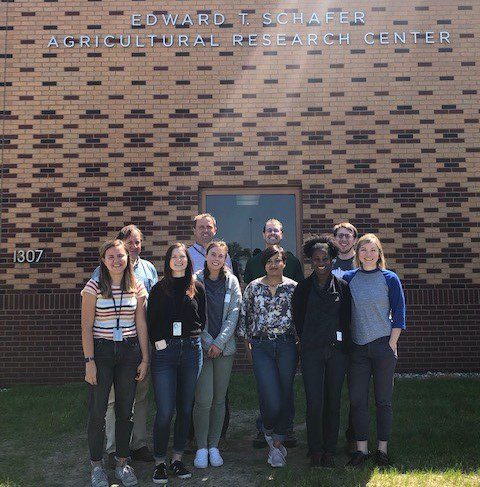The Agricultural Research Service (ARS) is the U.S. Department of Agriculture’s chief scientific in-house research agency. Across their 90 research locations, they are currently conducting 660 research projects within 15 national programs, working to find “solutions to agricultural problems that affect Americans every day from field to table.”
Melvin Bolton, PhD, is one of the scientists who works to address a few of these challenges related to sugarbeet. Dr. Bolton is the research leader at the Sugarbeet and Potato Research Unit in Fargo, North Dakota. This unit has eight sugarbeet research scientists and is the largest sugarbeet research location in the U.S.
Dr. Bolton is a plant pathologist and has worked with the team studying the pathology and physiology of sugarbeet since 2009. (It’s worth noting that he grew up on a farm in central Minnesota where his parents are putting in their 62nd crop this year!) The team includes a geneticist, a physiologist and two pathologists and they’ll soon be adding an epidemiologist, post-harvest pathologist, chemist and an agronomist. Currently, their research focuses primarily on two diseases that impact sugarbeet: cercospora leaf spot and rhizomania. Dr. Bolton explained that they “tend to focus more on the pathogen and how it causes disease with the long-term goal of developing resistance based on what they know and learn about the pathogen.”
Cercospora is a fungus that causes leaf spots that eventually result in browning of sugarbeet leaves. The pathogen is prevalent in the region around the Fargo unit, the Red River Valley and southern Minnesota. The team works to help farmers have better management of the disease while also working to better understand both the pathogen and the varieties that have resistance to it to ultimately help sugarbeet breeders develop new varieties that have both improved resistance and yield. In recent years, the fungus has become immune to popular fungicides used for disease management. Consequently, the Bolton lab is working to understand the molecular basis of their fungicide resistance to develop tools that will allow growers to quickly identify fungicide-resistant strains of Cercospora in their fields. This will help them to save money because they can choose fungicide chemistries specifically tailored to each field.
Rhizomania, or “crazy root”, is caused by a virus and is found throughout the world. In the past few years, previously resistant sugarbeet varieties no longer have resistance to rhizomania. In other words, “resistance breaking strains” have found a way to overcome rhizomania resistance. Figuring out how the virus is able to do this gives the scientists insights into how to best defeat it. They are currently working on a potential seed treatment or foliar spray that specifically targets the genome of the virus.
The research that is being done at the Sugarbeet and Potato Research Unit in Fargo is a good example of how the ARS is working to deliver scientific solutions to national and global agricultural challenges as well as the expertise needed to inform such solutions.





Get Social with #MoreToSugar